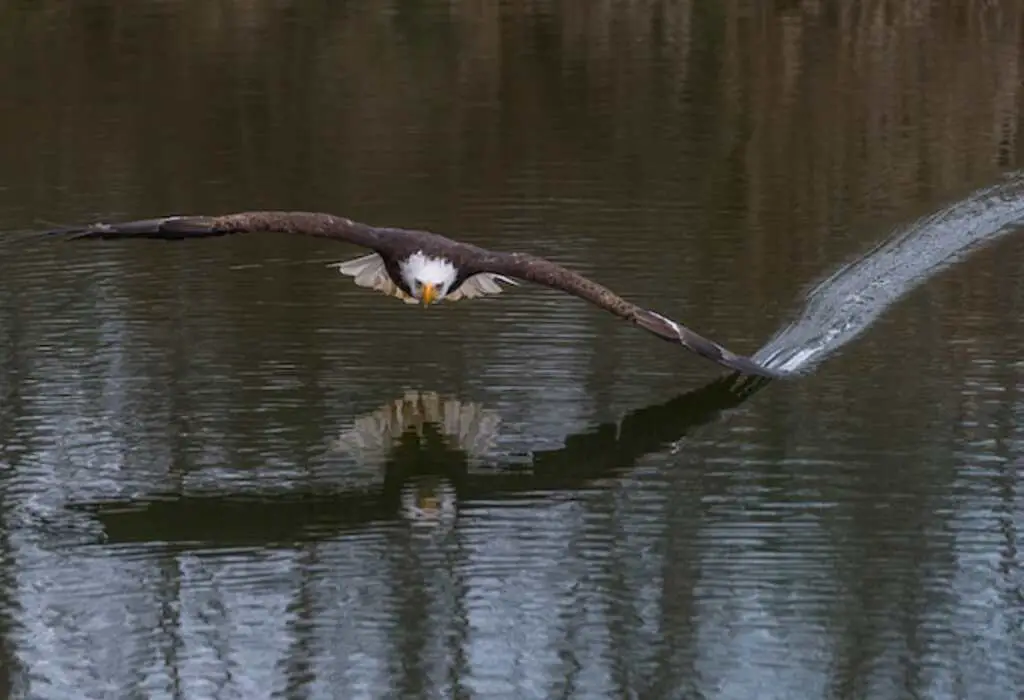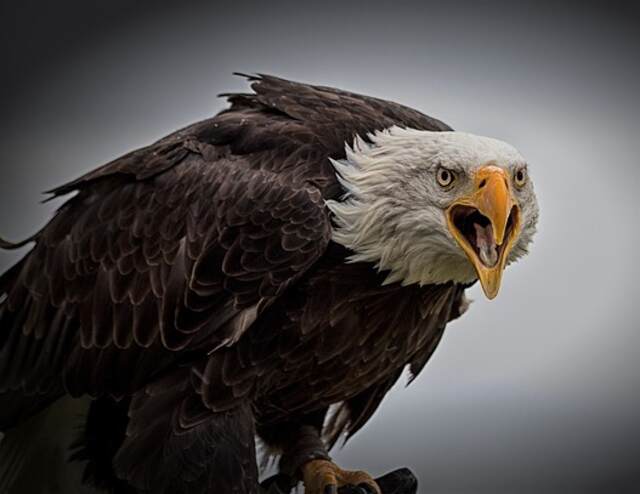How Do Eagles Help The Ecosystem? Brace yourself for a wild adventure as we unravel the secrets of these majestic birds of prey.
Found worldwide, eagles hold a crucial role in maintaining ecosystem balance. As apex predators, they regulate populations and indicate environmental changes.
Their unique scavenging abilities ensure nutrient recycling, while their presence in marine ecosystems signals ocean health.
Join us as we delve into the incredible ways eagles leave a lasting impact on our delicate ecosystems. Prepare to be amazed!
Table of Contents
- 1 Key Takeaways
- 2 How Do Eagles Help The Ecosystem
- 3 Overview of Eagle’s Role in Ecosystems
- 4 Apex Predators and Their Importance
- 5 Nutrient Cycling and the Role of Carrion
- 6 Eagle Species Around the World
- 7 The Importance of Eagles in Marine Ecosystems
- 8 The Impact of Human Activity on Eagle Populations
- 9 Efforts to Protect and Conserve Eagle Populations
- 10 The Benefits of Eagle Tourism
- 11 Eagle Research and Scientific Discoveries
- 12 The Future of Eagle Conservation
- 13 Frequently Asked Questions
- 14 Conclusion
- 15 Author
Key Takeaways
- Eagles are apex predators that play a crucial role in regulating populations of other animals and maintaining the health of the environment.
- Human activity has had a significant impact on eagle populations, but conservation efforts have led to their recovery and are necessary to ensure their continued survival.
- Eagle tourism can contribute to the economic growth of surrounding communities and support conservation efforts, while public awareness and education campaigns are essential in promoting conservation efforts.
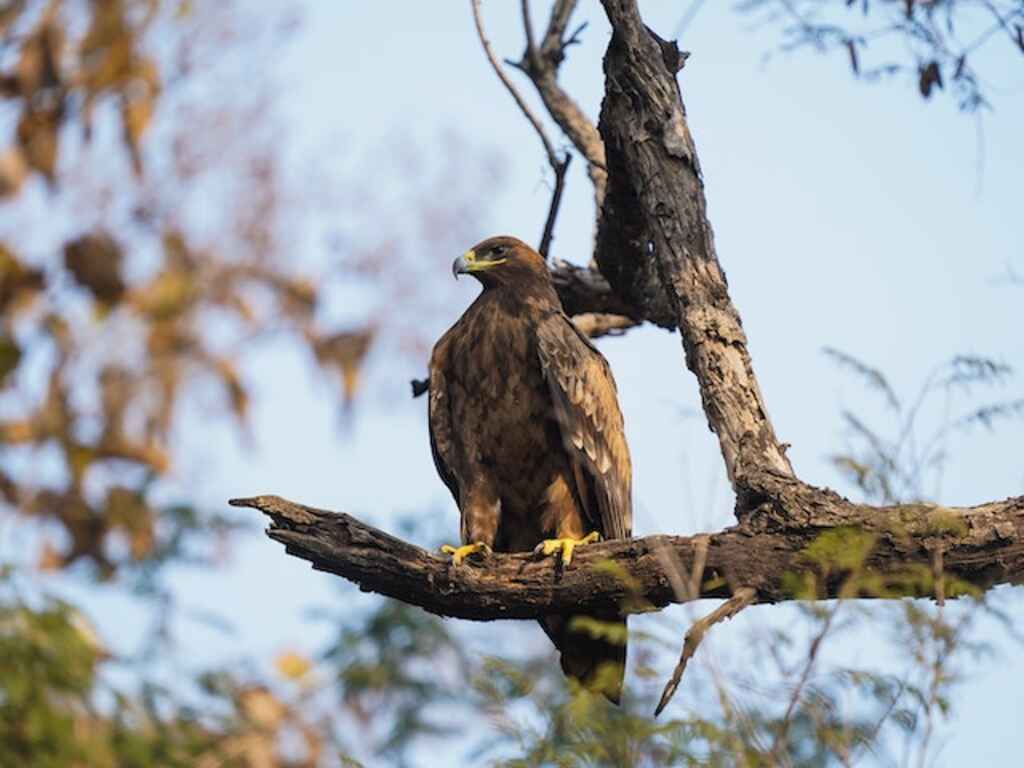
How Do Eagles Help The Ecosystem
Eagles play a vital role in the ecosystem by acting as top predators, maintaining balance and biodiversity.
They control populations of small mammals and birds, preventing overpopulation and promoting species diversity.
Additionally, eagle carcasses provide food for scavengers and help nutrient cycling. Their nesting behaviors also create habitats for other species.
Overall, eagles contribute to a healthy and functioning ecosystem.
Overview of Eagle’s Role in Ecosystems
The eagle’s position in the ecosystem as a top predator plays a crucial role in maintaining the balance of the food chain, ultimately contributing to the overall health and sustainability of the environment.
Eagles are known for their predatory behavior, hunting and feeding on a variety of prey including fish, small mammals, and other birds.
They prefer to inhabit open habitats such as mountains, forests, and coasts, where they can easily spot their prey.
Eagles are also known to have a significant impact on their environment, regulating populations of their prey and preventing overgrazing or overpopulation.
As apex predators, they are essential in maintaining the health and diversity of ecosystems.
With this important role, eagles have become a symbol of freedom, strength, and power.
Understanding the role of apex predators like eagles is critical to understanding the importance of maintaining a healthy and balanced ecosystem.
Apex Predators and Their Importance
Apex predators play a crucial role in maintaining the balance and diversity of the ecosystem through their regulation of prey populations and influence on the behavior of other species.
As the top of the food chain, they control the populations of their prey, preventing overgrazing and overpopulation.
Without apex predators, prey populations could grow unchecked, leading to a cascade of ecological imbalances.
Additionally, apex predators exert an indirect influence on other species by causing changes in their behavior and habitat use.
The importance of apex predators in food chains cannot be overstated, as their loss can have a significant impact on ecosystem stability.
For example, the decline of wolves in Yellowstone National Park led to an increase in elk populations, which in turn caused overgrazing and soil erosion.
Therefore, the conservation of apex predators is crucial for maintaining the health and balance of ecosystems.
As we explore the role of eagles in the ecosystem, we can see how they fit into this important ecological puzzle and how their loss could lead to potentially devastating consequences.
Moving forward, we will delve further into the topic of nutrient cycling and the role of carrion in maintaining ecosystem health.
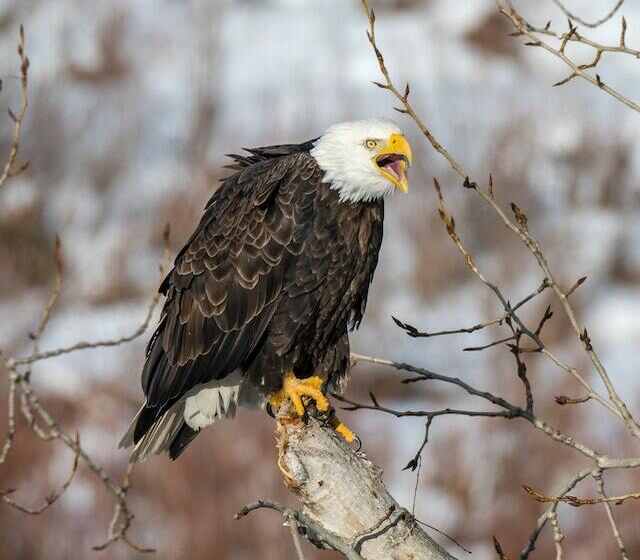
Nutrient Cycling and the Role of Carrion
Nutrient cycling is a critical process in maintaining the balance of ecosystems, and carrion plays a vital role in this process.
Carrion decomposition provides a source of nutrients for scavengers and decomposers, which is vital for the growth and development of various plants and animals in the ecosystem.
Scavenger community dynamics are also affected by carrion availability, as different species compete for the finite resource.
Apex predators like eagles play a crucial role in this process, as they help to regulate scavenger populations by feeding on carrion and preventing overpopulation.
The presence of eagles in an ecosystem also ensures that carrion is consumed quickly, which prevents the accumulation of harmful bacteria and reduces the risk of disease transmission.
With this in mind, it is important to understand the significance of carrion in nutrient cycling and how apex predators like eagles contribute to the health of ecosystems around the world.
Eagle Species Around the World
Various species of eagles can be found across different regions of the world, each with their own unique adaptations and ecological roles.
The bald eagle, for example, is found in North America and is known for its powerful talons and sharp eyesight, which allows it to hunt fish and other prey in marine ecosystems.
The golden eagle, on the other hand, is found in Eurasia and North America and is known for its ability to hunt large mammals such as deer and rabbits.
Other species of eagles, such as the harpy eagle in Central and South America, are important predators in tropical rainforests.
However, eagle conservation efforts have become increasingly important due to threats to eagle populations, such as habitat loss, hunting, and pollution.
It is crucial to protect these magnificent birds and their ecological roles in various ecosystems.
The next section will explore the importance of eagles in marine ecosystems.
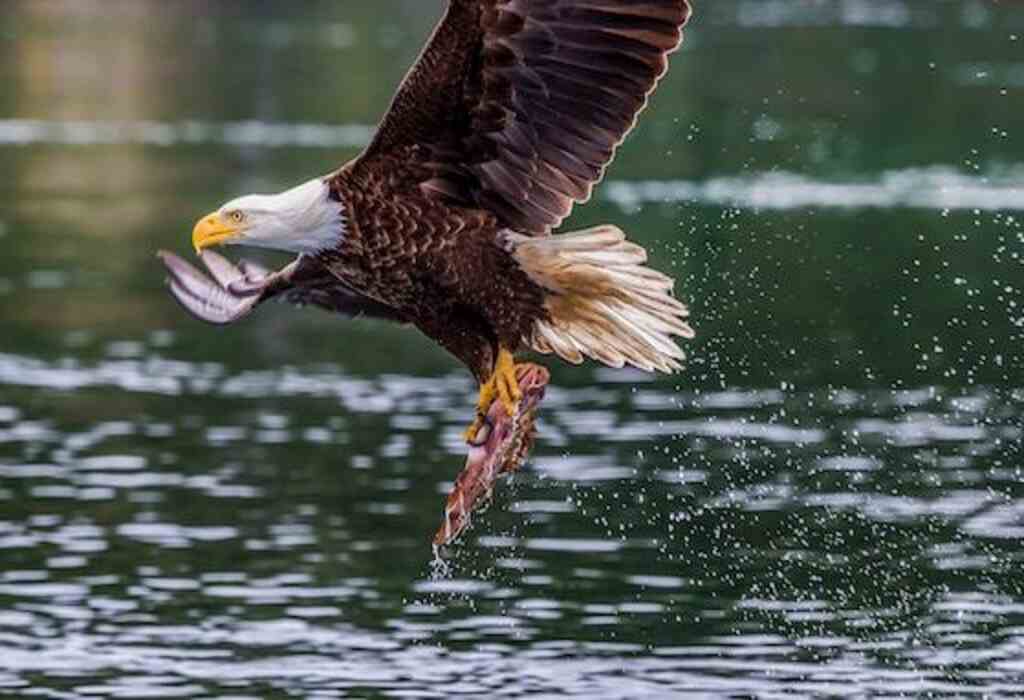
The Importance of Eagles in Marine Ecosystems
Eagles play a crucial role in maintaining the balance of marine ecosystems.
They help control fish populations by preying on smaller fish, which in turn prevents overpopulation and allows for healthier and more diverse fish populations.
Additionally, eagles contribute to nutrient cycling by consuming fish and distributing their remains throughout the ecosystem, which provides essential nutrients to other organisms and helps sustain the food chain.
The presence of eagles in marine ecosystems is therefore vital for the overall health and stability of these environments.
Controlling Fish Populations
One important aspect of the role of eagles in the ecosystem is their ability to regulate fish populations, thanks to their hunting behavior.
Eagles prey on a variety of fish species, including those that are overpopulated. By doing so, they help to balance fish populations and prevent them from becoming too large and unmanageable.
This has a ripple effect throughout the ecosystem, as an excessive population of a single species can cause disruptions in food chains and impact other aquatic organisms.
Additionally, eagle hunting behavior helps to remove weaker or diseased fish from the population, which can prevent the spread of disease and strengthen the overall health of the fish population.
By controlling fish populations, eagles play an important role in maintaining the health and balance of marine ecosystems.
Moving on to the next topic, eagles also contribute to nutrient cycling in their habitats.
Contributing to Nutrient Cycling
The nutrient cycling process in marine ecosystems is significantly influenced by the presence of apex predators such as eagles.
As eagles consume fish and other prey, they excrete waste that contains important nutrients like nitrogen and phosphorus.
These nutrients are then deposited onto the land or into the water, where they contribute to composting benefits and soil enrichment.
This process is essential for maintaining the health and productivity of the ecosystem. Additionally, when eagles die, their bodies decompose and release nutrients back into the environment.
Without apex predators like eagles, the nutrient cycling process would be disrupted, leading to negative impacts on the entire ecosystem.
As we will explore in the subsequent section, human activity has had a significant impact on eagle populations, which in turn affects the nutrient cycling process and overall health of the ecosystem.
The Impact of Human Activity on Eagle Populations
Human activity has had a significant impact on the populations of eagles, with factors such as habitat destruction, pollution, and hunting leading to declines in numbers.
Habitat destruction, caused by deforestation and urbanization, has reduced the available nesting sites for eagles.
Pollution, particularly from pesticides and other chemicals, has contaminated the food sources of eagles, leading to health problems and reduced reproductive success.
Hunting, both legal and illegal, has also contributed to declines in eagle populations.
Despite these challenges, conservation efforts have been made to protect and conserve eagle populations.
These efforts include habitat restoration projects, the banning of harmful pesticides, and strict hunting regulations.
Through these efforts, eagle populations have begun to recover, but continued conservation efforts are necessary to ensure their long-term survival.
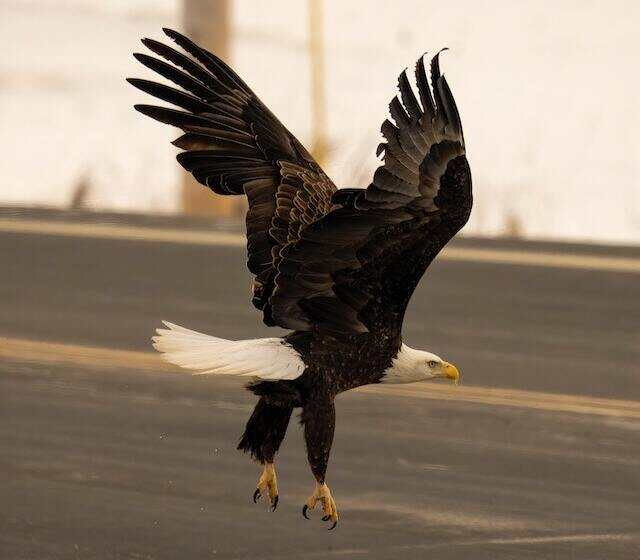
Efforts to Protect and Conserve Eagle Populations
Conservation efforts aimed at the protection of eagle populations have been likened to a balancing act, requiring a delicate negotiation between the needs of the eagles and the interests of humans.
Population management has been a key strategy to ensure the continued survival of these majestic birds of prey.
One approach has been to control the use of pesticides, which can accumulate in the food chain and have detrimental effects on the health of eagles.
Another approach has been to regulate hunting practices and enforce laws that prohibit the killing of eagles.
Efforts have also been made to restore and protect habitats that eagles depend on, such as wetlands and forests.
However, conservation efforts can often be met with resistance from industries or individuals who prioritize their own interests over those of the eagles.
As a result, ongoing monitoring and research is crucial to ensure that eagle populations continue to thrive.
In the next section, we will explore the benefits of eagle tourism and how it can contribute to the conservation of these iconic birds.
The Benefits of Eagle Tourism
Eagle tourism has become increasingly popular in recent years due to the majestic and awe-inspiring nature of these birds.
This subtopic will explore the various benefits of eagle tourism, including its economic impact, promotion of conservation efforts, and the importance of responsible tourism practices.
By examining these key points, we can gain a better understanding of how eagle tourism can contribute to the preservation of eagle populations and the ecosystems in which they live.
Economic Benefits
Undoubtedly, the presence of eagles in an ecosystem can significantly contribute to the economic growth of the surrounding communities through ecotourism and wildlife-based recreational activities.
Sustainable harvesting of the natural resources can be achieved through ecotourism development, as it provides an opportunity for the local communities to engage in activities that generate revenue while preserving the environment.
Eagle tourism can create jobs, increase income, and promote the growth of small businesses such as hotels and restaurants.
Additionally, wildlife-based recreational activities such as eagle watching and photography can attract visitors from all over the world, which can lead to an influx of revenue for the local economy.
The economic benefits of eagles in an ecosystem are undeniable, and their presence must be preserved to ensure continued growth and prosperity for surrounding communities.
Promoting conservation of these magnificent birds is essential to maintain their contribution to the economy and the ecosystem as a whole.
Promoting Conservation
Preserving the habitat and ensuring the availability of prey species are crucial steps in maintaining a healthy eagle population.
Eagles play a vital role in the ecosystem by regulating prey populations and serving as indicators of environmental health.
As such, public awareness and education campaigns are essential in promoting conservation efforts.
By increasing knowledge and understanding of the importance of eagles and their habitat, individuals, communities, and governments can take action to protect and preserve these magnificent birds and their ecosystems.
These efforts can include habitat restoration projects, responsible land and resource management practices, and the implementation of regulations and policies that protect eagles and their habitats.
Through education and awareness, we can all play a part in safeguarding these majestic creatures and the ecosystems they call home.
This leads us to the next section on responsible tourism practices, which can also play a significant role in eagle conservation.
Responsible Tourism Practices
Promoting conservation efforts has been essential in protecting the eagle population and their habitat.
However, it is also important to consider responsible tourism practices to ensure that the eagles’ environment is not further disrupted.
Sustainable tourism can contribute to the conservation of eagles by supporting local communities and promoting their involvement in tourism activities.
This approach can encourage the local community to take ownership of eagle conservation and protect the eagles’ habitat.
Community involvement can also raise awareness about the importance of eagle conservation and promote responsible tourism practices.
By implementing sustainable tourism practices and community involvement, we can ensure that the eagle population and their habitat are protected for future generations.
These efforts have led to significant scientific discoveries about eagle behavior and habitats, which will be discussed in the subsequent section.
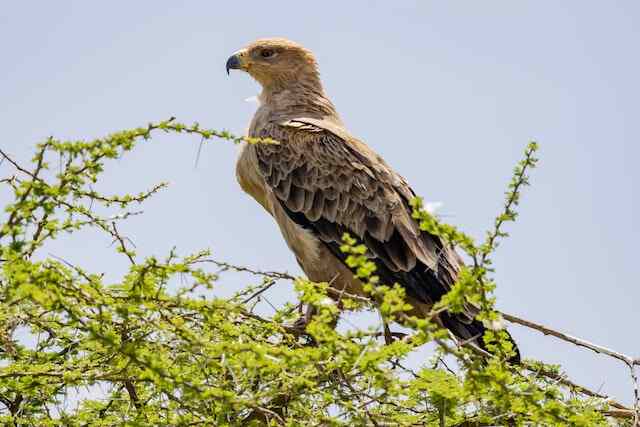
Eagle Research and Scientific Discoveries
Although some may argue that research on eagles is costly and time-consuming, it has led to important scientific discoveries that have increased our understanding of the ecosystem.
One of the most significant research findings pertains to eagle migration.
Scientists have been able to track the migration patterns of eagles, which has provided valuable insights into the functioning of ecosystems.
For instance, it has been discovered that eagles play a crucial role in regulating the populations of their prey, which in turn helps maintain the balance of the ecosystem.
Additionally, studies on eagle breeding behavior have shed light on the importance of preserving eagle habitats.
Through this research, we have learned that protecting eagle habitats is essential for the survival of these birds and the maintenance of a healthy ecosystem.
These scientific discoveries have highlighted the importance of eagle conservation efforts and have provided a foundation for future research on these magnificent birds.
Looking ahead, the future of eagle conservation will require a continued commitment to research, preservation of habitats, and responsible tourism practices.
The Future of Eagle Conservation
The future of eagle conservation presents new challenges and threats that require innovative solutions.
Emerging technologies and techniques offer promising avenues for studying and mitigating these threats.
Collaboration and partnership among stakeholders will be crucial in developing effective conservation strategies that ensure the long-term survival of these majestic birds of prey.
As a result, a concerted, interdisciplinary effort is necessary to address the complex issues facing eagle populations and their ecosystems.
New Challenges and Threats
Human activities such as habitat destruction, climate change, and pollution pose significant challenges and threats to the survival of eagles and their ecosystem.
Climate change can alter the timing of migration, breeding, and availability of prey, while habitat loss can result in fragmentation and loss of nesting sites.
Pollution can affect the quality of air, water, and soil, which can adversely impact the eagles’ health.
These threats are likely to intensify with the increasing human population, urbanization, and industrialization.
Therefore, it is crucial to develop effective conservation strategies that can mitigate these threats and protect the eagles and their ecosystem.
Emerging technologies and techniques can play a vital role in enhancing the conservation efforts, and we will explore these in the subsequent section.
Emerging Technologies and Techniques
Emerging technologies and techniques have the potential to significantly contribute to the conservation efforts of eagles and their surrounding ecosystem.
One such technology is artificial intelligence monitoring, which can help track the movements of eagles and provide real-time data on their behaviors and habitat usage.
This technology can also help identify potential threats and risks to the eagle populations, allowing for timely intervention and conservation efforts.
Another technique that can contribute to eagle conservation is sustainable hunting practices, which ensure that the eagle’s prey population remains stable and healthy.
This can be achieved through the implementation of regulations and guidelines for hunting, as well as education and awareness programs for local communities.
With the help of these technologies and techniques, it is possible to ensure the long-term survival and thriving of eagle populations and their ecosystem.
Collaboration and partnership between various stakeholders, including governments, conservation organizations, and local communities, will be crucial in achieving this goal.
Collaboration and Partnership
Collaboration and partnership among various stakeholders with a shared commitment to eagle conservation can pave the way towards a sustainable future for these majestic birds.
Community engagement is a crucial aspect of eagle conservation, as it involves the local community in protecting the ecosystem and the species that inhabit it.
Cross sector partnerships between conservation organizations, government agencies, and private entities can also play a significant role in eagle conservation by providing necessary resources, funding, and expertise.
These partnerships can lead to innovative solutions and strategies that benefit both the eagles and the ecosystem.
By working together, we can ensure that eagles continue to thrive in their natural habitats, contributing to the overall health and balance of the ecosystem.

Frequently Asked Questions
How do eagles mate and reproduce?
Eagles mate through intricate mating rituals, including sky-dancing and aerial displays. They exhibit extensive parenting behaviors, with both parents sharing incubation duties and feeding their young. Their reproduction contributes to the balance of the ecosystem.
Do eagles have any natural predators?
Eagles have few natural predators, with only larger birds of prey or packs of wolves posing a threat. Their exceptional hunting techniques aid in their survival, allowing them to hunt prey smaller than themselves and avoid confrontations with potential threats.
What is the lifespan of an eagle?
Have you ever wondered about the lifespan of eagles? Understanding the life cycle of eagles: a beginner’s guide. Eagles can live up to 30 years in the wild and have unique breeding habits.
How do eagles communicate with each other?
Eagles communicate with each other through various vocalizations and visual cues such as body language and feather posture. They use distinct calls to convey messages and establish territory. This communication is essential to their survival and mating rituals.
Eagles navigate and hunt their prey using their exceptional eyesight and hunting tactics, such as soaring and diving. With eyesight eight times stronger than humans, they can spot prey from far distances and adjust their flight to capture it with precision.
Conclusion
In conclusion, eagles play a crucial role in maintaining the balance of ecosystems worldwide. As apex predators, they help regulate the populations of prey species, ensuring that they do not overgraze or damage their habitats.
Additionally, their scavenging of carrion helps to facilitate nutrient cycling, ensuring that essential nutrients are returned to the soil.
Furthermore, eagles are also important indicators of ecosystem health, as their presence or absence can provide valuable information on the overall health of an ecosystem.
Efforts to protect and conserve eagle populations are essential to ensure the continued health and well-being of ecosystems worldwide.
In our imaginations, eagles soar through the skies, their sharp eyes scanning the landscape below for prey.
These magnificent birds are more than just symbols of freedom and power – they are essential components of the ecosystems they inhabit.
Through continued research, conservation efforts, and responsible tourism, we can ensure that these majestic creatures continue to thrive for generations to come.

